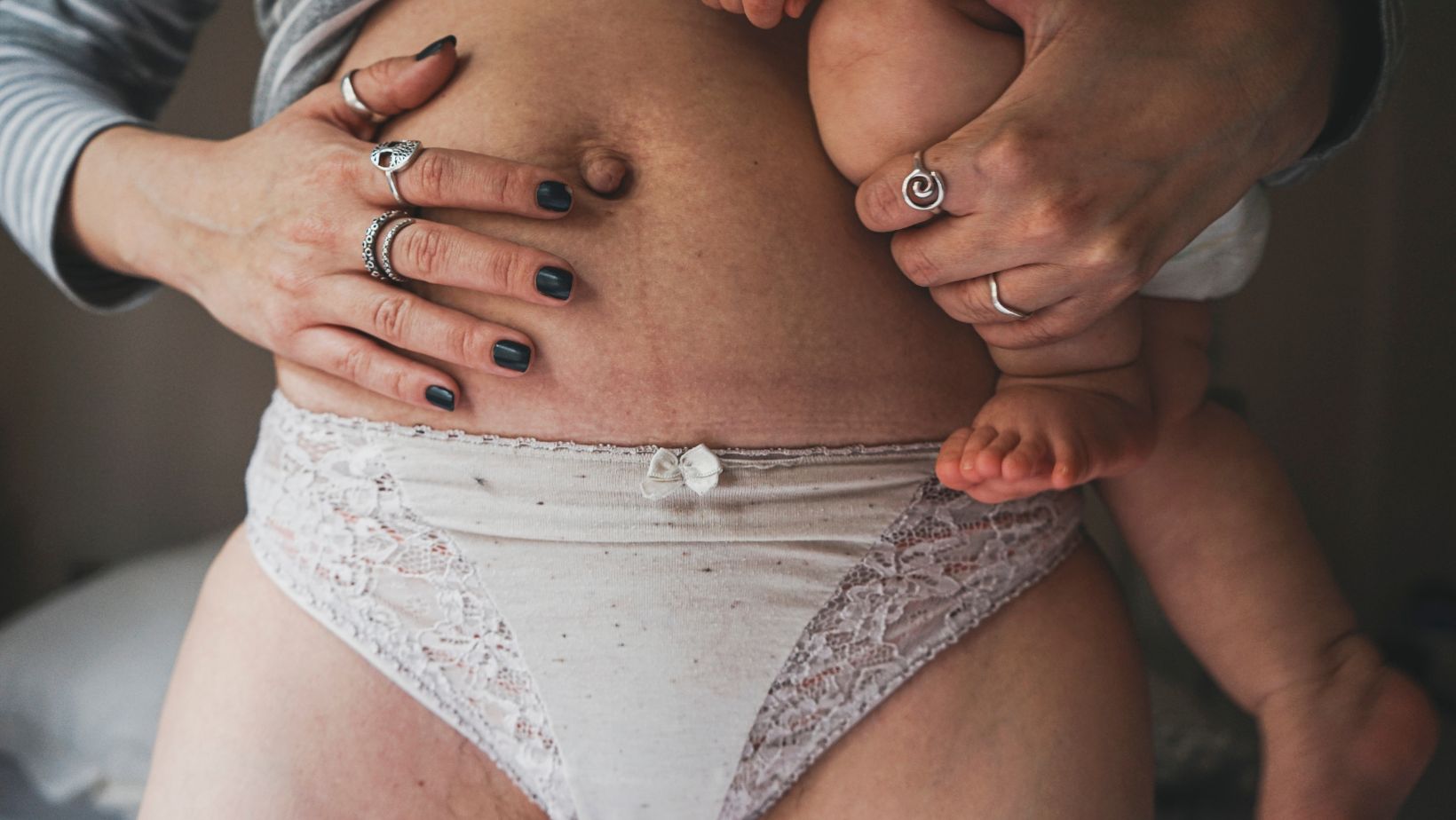Postpartum recovery can be an overwhelming experience, but with the right postpartum recovery checklist, your journey will be much smoother. A postpartum recovery checklist helps prioritize essential tasks, fostering healing and well-being. You’re led through important topics such as sleep, diet, and emotional health, to help make postpartum recovery possible.
By listening to your body and following these tips from your ob-gyn, you can get back to your daily activities more quickly and catch potential problems early. This checklist highlights practical steps for physical comfort, such as managing pain, promoting healthy eating habits, and ensuring regular medical check-ups.
Keep in mind that no two recovery experiences are the same, so think of this checklist as more of a guiding tool. It’s designed to empower you with knowledge, helping you focus on what’s important during this transformative time.
Understanding Postpartum Recovery
Again, treating the postpartum period as the “fourth trimester” would be a good first step. These initial three months postpartum are essential for the overall health of a new mother. Prioritizing postpartum recovery is essential, especially when you think about the physical toll that the process of giving birth takes.
Many obgyn clinics emphasize the importance of postpartum care, offering tailored support to help new mothers navigate this critical phase. We can’t underestimate the power of rest—giving the body time to heal and recalibrate.
What Happens After Birth
Post-birth, monitoring vital signs like temperature and blood pressure is key. These indicators help ensure everything is on track. It’s common to feel abdominal pain as the uterus contracts and shrinks, a normal part of recovery. After delivery, your home becomes a sanctuary for rest and healing, providing a comfortable space to recover.
Vaginal bleeding, known as lochia, varies in color from red to yellowish-white. It’s heaviest in the first ten days, tapering off gradually. Monitoring this bleeding is important, especially if it soaks a pad within an hour, which could indicate a need for medical attention.
Physical and Emotional Changes
Hormonal changes after giving birth often lead to emotional ups and downs. There’s equal importance to addressing the physical and emotional recovery needs. Symptoms of postpartum depression can develop weeks after giving birth, so knowing the signs and having access to resources and support can have a tremendously positive impact.
Common Postpartum Challenges
From incontinence to postpartum depression, new moms experience intimate and painful realities, and their experiences are tragically underreported. It’s smart to be prepared for complications like severe bleeding or infection.
Help is there to get you through physical discomforts such as constipation, as well as emotional pain. While postpartum hemorrhage is a rare event, severe bleeding experiences are not, impacting nearly 1 in 5 women.
Exercise can be prohibited at first, especially after a C-section, highlighting that patience is key to postpartum recovery.
Postpartum Recovery Timeline
Creating a timeline for postpartum recovery can guide you through each stage, helping you track milestones from birth to six months. Every woman’s recovery time is different. Some will be completely healed in three weeks if they haven’t torn, some might take six weeks or longer.
Setting clear goals for each of those weeks can help take the stress out of everything you’ll need to do.
Week 1 Recovery Focus
During the first week, I recommend resting often, drinking plenty of fluids, and using stool softeners and mild laxatives. These are especially important as your body starts its healing journey.
Watch for signs of complications, including heavy bleeding or fever. Be sure to stay connected with your healthcare professionals. Gentle activity, like brief walks, improves circulation and reduces the risk of blood clots.
Week 3 Healing Progress
Around the three-week mark, take stock of how your body is healing. Incisions and tears should show signs of healing, and bleeding will likely decrease, with lochia changing from red to pink.

Emotional well-being matters just as much. Postpartum depression is rampant. Gentle movements, such as stretching, can help support the body’s healing.
Week 6 Recovery Milestones
Make an appointment for a postpartum check-up. Your uterus will have shrunk back down to pre-pregnancy size, and you can start talking about/involving contraception options.
Consider less pain and better mobility as major accomplishments in their own right.
Six Months and Beyond
After the six-month mark and beyond, keep an eye on your health. Having a plan and a routine that incorporates self-care, and being candid with the family about your needs is essential.
Encouragement from medical professionals and peer support networks continues to be important as you learn to be a new mom.
Detailed Postpartum Care Checklist
1. Self-Care Essentials
Rest and hydration are the bedrock of postpartum recovery. Newborns require around-the-clock feedings, making for a rude awakening in every sense. Hydrating with water and taking short naps when you can are keys to fighting that new level of exhaustion.
Get a good supply of postpartum pads like Frida Mom Perineal Ice Maxi Pads. They are useful for providing comfort and controlling lochia (bleeding), which is heaviest during the first 3 to 10 days. Wear clothes that help you heal. Soft, stretchy fabrics will keep you comfy.
A breast pump can help maintain feeding when latching is a challenge. Make dietary adjustments to increase energy, including meals that are quick to make and reheat.
2. Health Monitoring Practices
Monitoring vital signs and monitoring for warning signs such as swelling, pain, and trouble breathing are critical during this time. Routine postpartum visits provide opportunities to monitor and address health needs.
Using a symptom diary to track how things have improved or worsened can help with more fruitful conversations with providers. This proactive approach not only identifies concerns but allows for intervention before they become an issue.
3. Family Planning Considerations
Talk about fertility and contraception with your healthcare provider. It’s important to note that ovulation can occur before the return of the first postpartum period.
Preparing for another pregnancy, taking care of your body and mind, and engaging in honest dialogue about the decision with your partner are vital steps.
4. Managing Bleeding and Incisions
The bleeding usually progresses from red to yellowish-white over a few weeks. Taking care of incision sites and using the right pain relief methods, such as Acetaminophen or Ibuprofen, will help healing and lessen pain.
Reporting these concerns on time is paramount.
5. Supporting Emotional Well-Being
Having a strong support network is key to navigating emotional challenges. Mind activities that foster mental calmness, like light physical activity or mindfulness meditation, support emotional well-being.
If you’re feeling sad most of the time, seek help from a professional.
6. Bladder and Bowel Management
Combined with pelvic floor exercises, they can help manage incontinence. A healthy diet helps you avoid constipation, and fiber-rich foods, in particular, help bowel movements stay regular.
Please contact your healthcare provider if you have any urinary concerns.
7. Sexual Health Awareness
Make time to talk about sexual health with your partner and provider. Give yourself time and wait for medical clearance before resuming intercourse.
Provide contraceptive counseling to avoid future unintended pregnancies.
8. Baby Care Basics
Getting a grasp on the routine of diaper changes, feeding, and going to sleep is key. Partners can take part in night-time nursing.
Resources like parenting classes provide helpful direction. Making sure the mother has a comfortable, restful environment helps the baby.
Practical Tips for Recovery
Developing a daily routine that balances self-care and baby care is key. Start with simple tasks like setting aside time for a warm sitz bath, as recommended by the Mayo Clinic, for 5 to 15 minutes. This can ease discomfort and promote healing.
Ice packs provide relief in the first 24 hours post-vaginal birth. Including products like Dermoplast or Earth Mama Organics spray in your routine can soothe pain naturally.
Setting realistic expectations from the start is important. If there is tearing, recovery can take six weeks or more. Asking for assistance from loved ones alleviates anxiety.
Know the signs of postpartum health concerns and connect with local support networks or resources.
Coping with Mood Swings
Mindfulness exercises, like deep-breathing, are an effective way to combat mood swings. Maintain communication with your partner, fostering a safe space.
Emotional support from friends or peer support groups provides reassurance in times of change and high emotion.
Healing Incisions and Tears
Clean with mild cleansers and watch for symptoms of infection. If you’re questioning anything, talk to your medical professional.
Adding Epsom salts to baths or foot soaks is a calming and relaxing addition to any recovery kit.
Maintaining Health and Lifestyle
Light exercise and nutritious eating helped speed her recovery. Sleep and rest are crucial as well, especially while your body is healing.
Keep up routine visits with other healthcare providers to address all aspects of recovery.
Effective Recovery Strategies
By developing a recovery plan that addresses the physical, emotional, and social domains, a more well-rounded and holistic recovery can be achieved.

Postpartum recovery kits, specifically stool softeners such as Colace, should be on hand. Refine approaches to measure success continuously.
Conclusion
Navigating postpartum recovery is a whole other ballgame. With the right tools and information, you can set yourself up for a less challenging walk through this new life stage. Your OB-GYN’s knowledge and experience is your best guide, providing a checklist that includes tips to aid your physical recovery and emotional well-being. These small, practical interactions prioritize your everyday needs, leading you to a smoother recovery experience. Think of every step as a loving push in the direction of regaining your physical and emotional health. Take care of yourself and rely on your village. If you have any questions or concerns, please reach out to your healthcare provider. Listen to your body and trust your gut as you learn to care for yourself and your new baby. Now looking forward to all that this new chapter holds in store for you? So let’s go through it piece by piece, to help you not just survive, but thrive in your postpartum experience.
